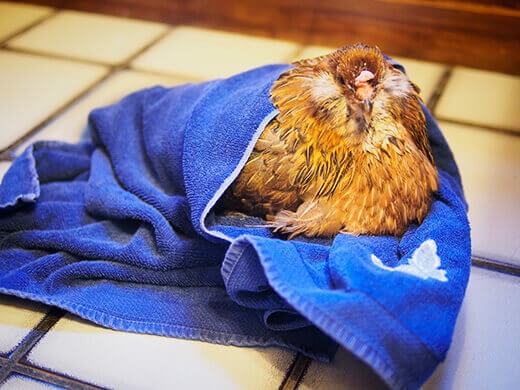Ever since my tribute to Gisele, where I mentioned giving her spa baths and blow-dries, I’ve gotten a great many chicken-keepers curious enough to ask why I do it and how they can do it, too.
The spa treatment is what I use when one of my chickens is acting “off,” but I can’t immediately tell what’s bothering her. Her tail is down, her head is hunched, her feathers are fluffed. She isn’t eating or drinking as much as she usually does. She stands apart from the flock, or goes to roost early. Sometimes the reason is as simple as exhaustion from a molt, or stress from a change in environment (whether it be a seasonal shift, a move to unfamiliar housing, or the arrival of new flock members). Sometimes it’s a physical ailment, like a stuck egg or sour crop.
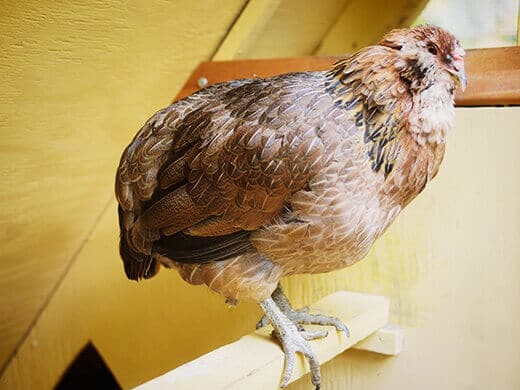
In any of these cases, my first step is to always treat her to an Epsom salt bath. It’s not a cure-all by any means, but it often provides relief and makes the hen more comfortable while I try to diagnose her at home.
Epsom salt is a naturally occurring mineral compound called magnesium sulfate. It is used both internally and externally, as a laxative, detoxifier, skin soother, muscle relaxer, and pain reliever. As a general pick-me-up, magnesium can improve circulatory health and reduce fatigue and stress.
Studies on the external effects of Epsom salts (when they’re absorbed through the skin) tend to be mixed, but since I’ve personally always gotten relief after an Epsom salt bath, I feel it never hurts to take a soak. What is medically proven is the use of magnesium sulfate as a laxative; an oral dose of Epsom salts (dissolved in water) helps move things along in the bowels.
For a chicken, an Epsom salt bath helps her relax the same way it helps us. If she’s found to be egg-bound, a warm soak will ease her muscles and encourage the egg to slide out. If she’s eaten something she’s not supposed to, it will help flush out toxins. If she’s suffering from irritated skin, it will soothe and soften the redness. Epsom salts also help maintain the proper calcium levels and restore the balance of minerals in an active layer.
Begin your spa treatment by filling a wash tub with a few inches of warm water (the same temperature you’d take a bath in). You want the water to come up to your chicken’s chest while she sits in the tub.
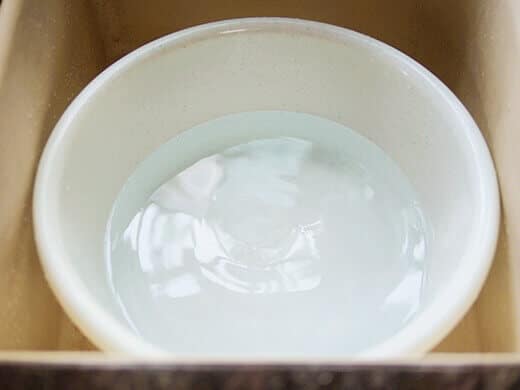
Dissolve a quarter-cup of Epsom salts in the warm water. Place your chicken inside the tub and let her relax into her soak. She might stay standing at first, but she’ll eventually make herself comfortable. To relax her further, place a towel over the tub to cover her head. The quiet darkness and steaming effect will help her settle down.
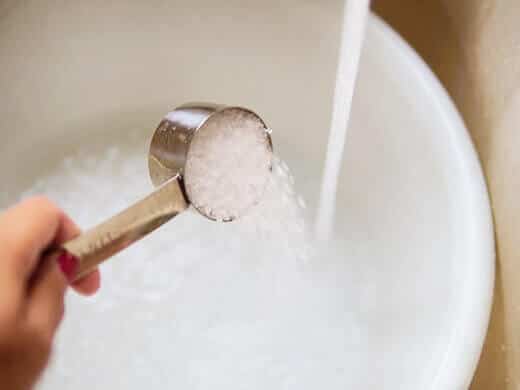
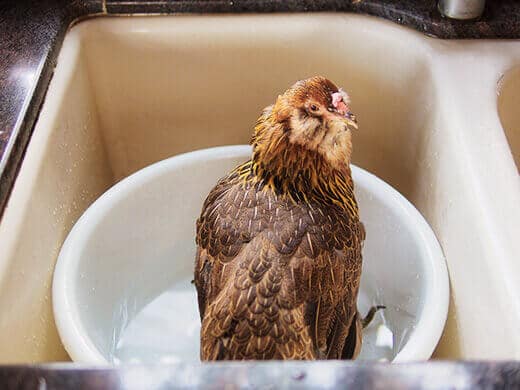
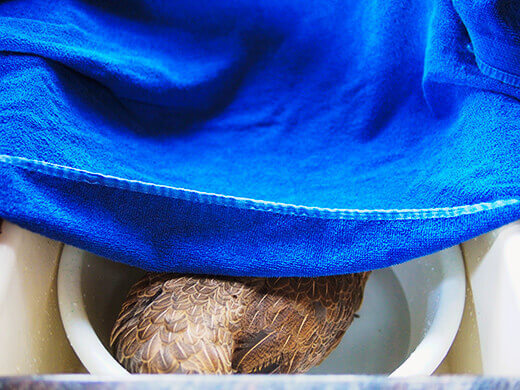
Leave your chicken in the bath for up to an hour, or until the water has cooled down. If you suspect she may be egg-bound, bath time is a good time for you to start feeling around her abdomen for an unusual protrusion. You can start massaging her lower area and, in more dire cases, don a glove, lube up a finger, and feel inside her vent for an egg. If you do find an egg, continue to massage her abdomen, taking care not to break the egg inside her (which could lead to a whole set of other problems). With gentle and loving massage, she should be able to pass the egg on her own.
If your chicken isn’t egg-bound but doesn’t seem to be bouncing back after her bath, you can administer some Epsom salts or olive oil orally. Epsom salts help detoxify, while olive oil keeps things lubricated in case she needs to pass an obstruction through her crop or vent. I use a medicine syringe, the same kind used to medicate a child or pet.
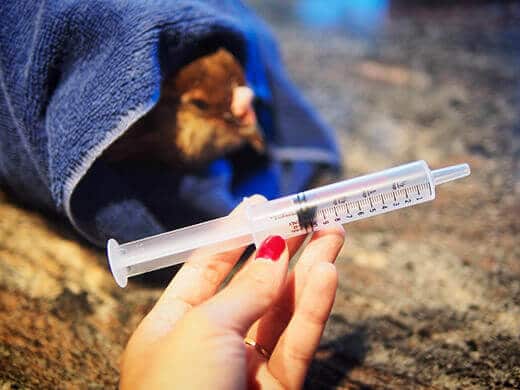
Dissolve a teaspoon of Epsom salts in one cup of water. If your chicken hasn’t been drinking, you can dissolve the Epsom salts in coconut water or unflavored Pedialyte (both of which contain essential nutrients and electrolytes) to keep her hydrated.
If needed, swaddle your chicken in a towel so she keeps calm. Fill the syringe, then put a few drops of Epsom salt water (or olive oil) onto the side of her beak and wait for her to drink. If you’re doing this by yourself, it can be a very long process… so have patience.
If you have a second set of hands to hold her, you can gently pry her beak open and squirt a few drops directly into her mouth, making sure she swallows. Be careful not to shoot the solution down her throat, as it could go down her airway and into her lungs.
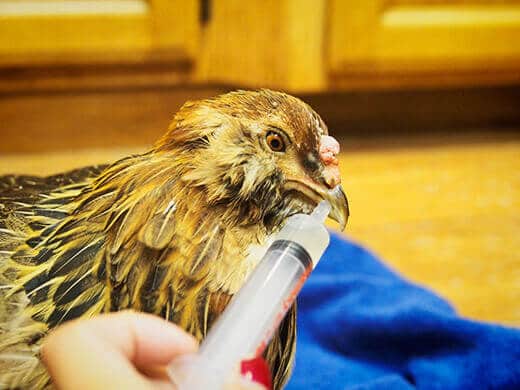
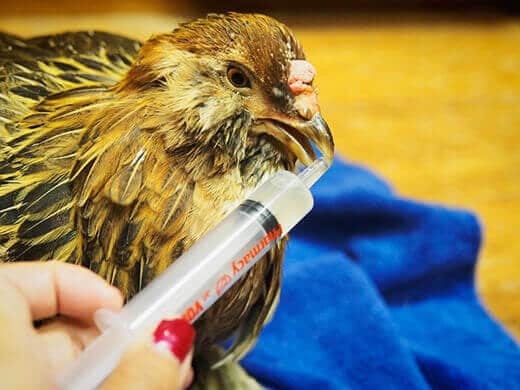
I fill the whole syringe (two teaspoons’ worth) and feed until it’s empty. Sometimes it takes two or three syringe-fuls as a good portion of the solution just dribbles down her chin. There doesn’t seem to be any standard for how much you should hydrate your chicken, so use your best judgment.
Once your chicken is fed, towel her off and give her a gentle blow-dry (on low heat) until her feathers are completely dry. My chickens have always loved this part, and will happily take any primping and pampering they can get!
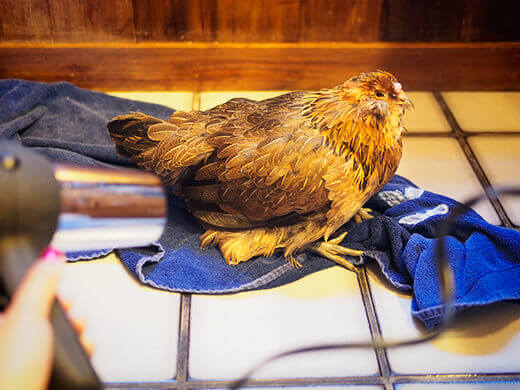

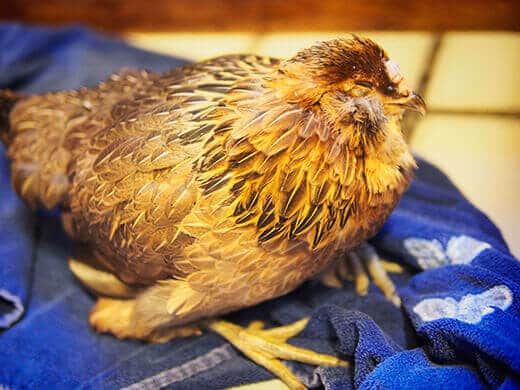
Don’t be alarmed if your chickens’ droppings appear very watery after a bath; they should return to normal in a few hours, unless there is an underlying problem that you can detect in the poop.
After a little B&B (bath and blow-dry), you can let your chicken rejoin her flock (if she likes to be social) or move her into a “hospital coop” for a more private recovery. Sometimes this is all it takes to restore your chicken to vigor and make her feel like a brand-new bird.
I’ve treated all of my girls to a spa day at some point… Kimora got a little pampering when I needed to wash off and cut away her poop dreads (yes, it looked exactly like it sounds). Iman indulged during a molt, when the new pin feathers on her feet were breaking and bleeding (and being pecked at by the other birds). Gisele got one the day before she died, which was heartbreaking for me, but I could only hope it made her feel safe and nurtured in her final days.
Even if a spa treatment can’t cure your sweet thing of a more serious ailment, it never hurts to try and the bonding moment you’ll have with your hen is precious.


